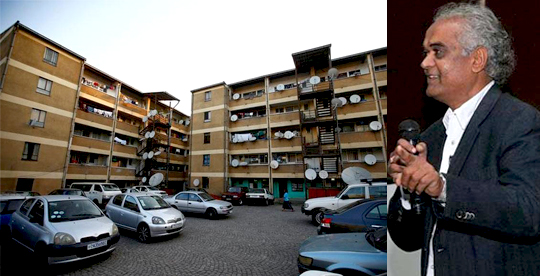Washington D.C., Feb 6: An international team of astronomers has found an unusual monster galaxy that existed about 12 billion years ago when the universe was only 1.8 billion years old.
The team of astronomers was led by scientists at the University of California, Riverside.
Dubbed XMM-2599, the galaxy formed stars at a high rate and then died. Why it suddenly stopped forming stars is unclear.
"Even before the universe was 2 billion years old, XMM-2599 had already formed a mass of more than 300 billion suns, making it an ultra massive galaxy," said Benjamin Forrest, a postdoctoral researcher in the UC Riverside Department of Physics and Astronomy and the study's lead author.
"More remarkably, we show that XMM-2599 formed most of its stars in a huge frenzy when the universe was less than 1 billion years old and then became inactive by the time the universe was only 1.8 billion years old," Forrest added.
The team used spectroscopic observations from the W. M. Keck Observatory's powerful Multi-Object Spectrograph for Infrared Exploration or MOSFIRE, to make detailed measurements of XMM-2599 and precisely quantify its distance.
The study results appear in the Astrophysical Journal.
"In this epoch, very few galaxies have stopped forming stars, and none are as massive as XMM-2599," said Gillian Wilson, a professor of physics and astronomy at UCR in whose lab Forrest works.
"The mere existence of ultramassive galaxies like XMM-2599 proves quite a challenge to numerical models. Even though such massive galaxies are incredibly rare at this epoch, the models do predict them."
"The predicted galaxies, however, are expected to be actively forming stars. What makes XMM-2599 so interesting, unusual, and surprising is that it is no longer forming stars, perhaps because it stopped getting fuel or its black hole began to turn on. Our results call for changes in how models turn off star formation in early galaxies," the professor stated.
The research team found XMM-2599 formed more than 1,000 solar masses a year in stars at its peak of activity -- an extremely high rate of star formation. In contrast, the Milky Way forms about one new star a year.
"XMM-2599 may be a descendant of a population of highly star-forming dusty galaxies in the very early universe that new infrared telescopes have recently discovered," said Danilo Marchesini, an associate professor of astronomy at Tufts University and a co-author on the study.
"We have caught XMM-2599 in its inactive phase," Wilson said, who led the W. M. Keck Observatory data acquisition
Co-author Michael Cooper, a professor of astronomy at UC Irvine, said this outcome is a strong possibility.
"Perhaps during the following 11.7 billion years of cosmic history, XMM-2599 will become the central member of one of the brightest and most massive clusters of galaxies in the local universe," he said.
"Alternatively, it could continue to exist in isolation. Or we could have a scenario that lies between these two outcomes," he stated.
The study was supported by grants from the National Science Foundation and NASA.






Comments
Add new comment